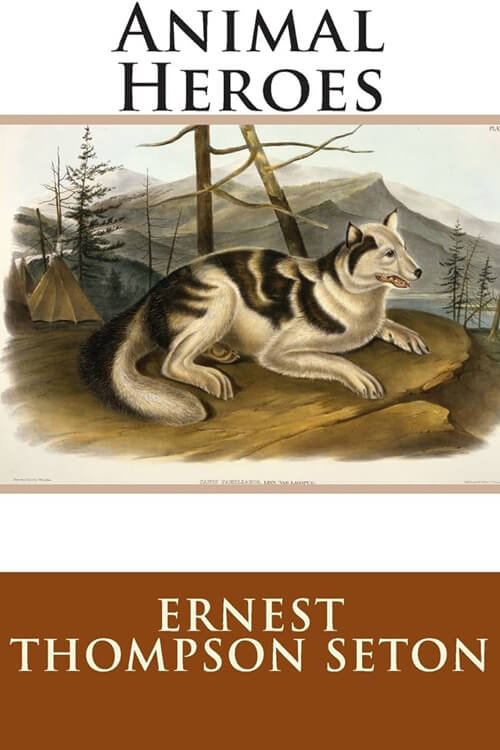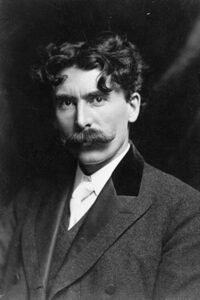
Animal Heroes
M-e-a-t! M-e-a-t!” came shrilling down Scrimper’s Alley. Surely the Pied Piper of Hamelin was there, for it seemed that all the Cats in the neighbourhood were running toward the sound, though the Dogs, it must be confessed, looked scornfully indifferent.
“Meat! Meat! “and louder; then the centre of attraction came in view—a rough, dirty little man with a push-cart; while straggling behind him were a score of Cats that joined in his cry with a sound nearly the same as his own. Every fifty yards, that is, as soon as a goodly crowd of Cats was gathered, the push-cart stopped. The man with the magic voice took out of the box in his cart a skewer on which were pieces of strong-smelling boiled liver. With a long stick, he pushed the pieces off. Each Cat seized on one, and wheeling, with a slight depression of the ears and a little tiger growl and glare, she rushed away with her prize to devour it in some safe retreat.
“Meat! Meat!” And still, they came to get their portions. All were well known to the meat-man. There was Castiglione’s Tiger; this was Jones’s Black; here was Pralitsky’s “Torkershell,” and this was Madame Danton’s White; there sneaked Blenkinshoff’s Maltee, and that climbing on the barrow was Sawyer’s old Orange Billy, a brazen fraud that never had had any financial backing,—all to be remembered and kept in account. This owner was sure to pay a dime a week; that one’s doubtful. There was John Washee’s Cat, which got only a tiny piece because John was in arrears. Then there was the saloonkeeper’s collared and ribboned ratter, which got an extra lump because the ‘barkeep’ was liberal, and the roundsman’s Cat, who brought no cash but got unusual consideration because the meat man did. But there were others. A black Cat with a white nose came rushing confidently with the rest, only to be repulsed savagely. Alas! Pussy did not understand. She had been a pensioner of the barrow for months. Why this unkind change? It was beyond her comprehension. But the meat man knew. Her mistress had stopped payment. The meat man kept no books but his memory, and it never was at fault.
Read or download Book
Ernest Thompson Seton
Ernest Thompson Seton (born Ernest Evan Thompson August 14, 1860 – October 23, 1946) was an English-born Canadian-American author, wildlife artist, founder of the Woodcraft Indians in 1902 (renamed Woodcraft League of America), and one of the founding pioneers of the Boy Scouts of America (BSA) in 1910.
Biography.
Seton also influenced Lord Baden-Powell, the founder of the Scouting movement. His writings were published in the United Kingdom, Canada, the US, and the USSR; his notable books related to Scouting include The Birch Bark Roll and the Boy Scout Handbook. He is responsible for appropriating and incorporating what he believed to be American Indian elements into the traditions of the BSA.
Early life
Seton was born to Scottish parents in South Shields, County Durham, England. His family emigrated to British North America in 1866. After settling in Lindsay, Canada, West Seton spent most (after 1870) of his childhood in Toronto, and the family is known to have lived at 6 Aberdeen Avenue in Cabbagetown. As a youth, he retreated to the woods of the Don River to draw and study animals as a way of avoiding his abusive father. He attended the Ontario College of Art in 1879, studying with John Colin Forbes, then won a scholarship in art to the Royal Academy in London, England, in 1880. In the 1890s, he studied at the Académie Julian in Paris. In 1893-4, he was elected an associate member of the Royal Canadian Academy of Arts.
On Seton’s 21st birthday, his father gave him an invoice for all the expenses connected with his childhood and youth, including the fee charged by the doctor who delivered him. One writer said he paid the bill but never spoke to his father again. In his autobiography, Trail of An Artist-naturalist: The Autobiography of Ernest Thompson Seton, he discusses the incident in detail. Still, since he hadn’t “a cent of money,” he could not pay his father. He went immediately to work and used the money he made to leave the household forever.
In 1882, he joined his brother on a homestead outside Carberry, Manitoba, where he began to write. In 1891, he published The Birds of Manitoba and was appointed Provincial Naturalist by the government of Manitoba. He continued to publish books about Manitoba for decades, including The Life Histories of Northern Animals: An Account of the Mammals of Manitoba. He lived in Manitoba before moving to New York and Connecticut. In 1930, he moved to Santa Fe, New Mexico.
He changed his name to Ernest Thompson Seton (after initially switching it to Ernest Seton-Thompson), believing that Seton had been an important family name. He became successful as a writer, artist, and naturalist and moved to New York City to further his career. Seton later lived at Wyndygoul, an estate he built in Cos Cob, a section of Greenwich, Connecticut. After experiencing vandalism by the local youth, Seton invited them to his estate for a weekend, where he told them what he claimed were stories of the American Indians and nature. Seton was an early and influential member of the Camp-Fire Club of America, hosting several of the club’s earliest official events at his Wyndygoul estate.
He formed the Woodcraft Indians in 1902 and invited the local youth to join. Despite the name, the group comprised non-native boys and girls. The stories became a series of articles written for the Ladies Home Journal and were eventually collected in The Birch Bark Roll of the Woodcraft Indians in 1906. Shortly after, the Woodcraft Indians evolved into the Woodcraft Rangers, established as a non-profit organization for youth programming in 1922.






